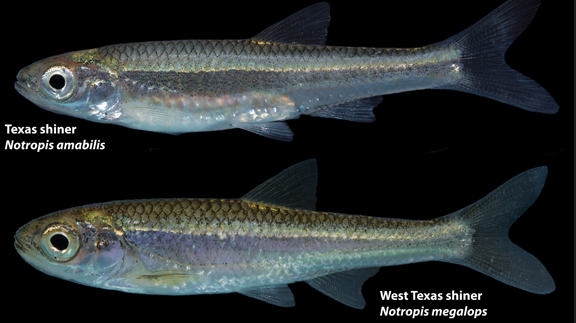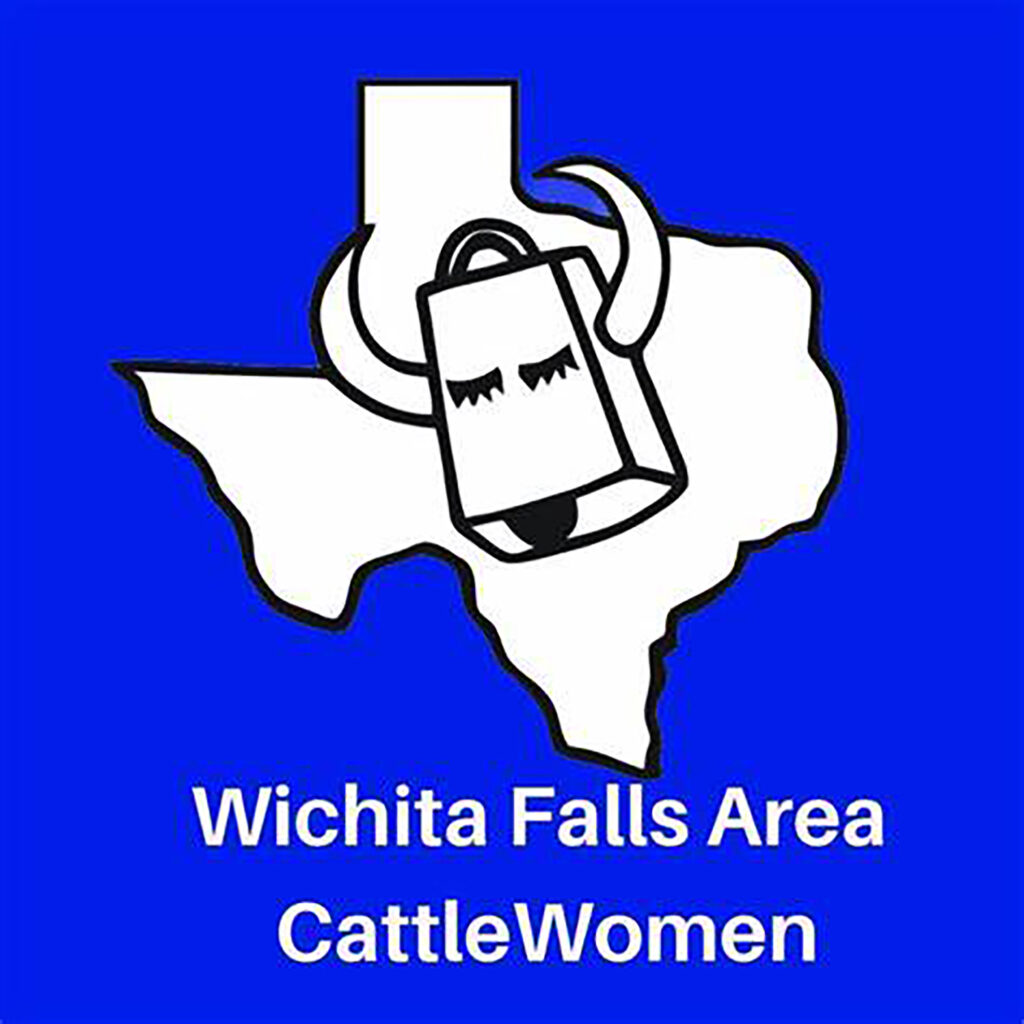HOME
[AgriLife Today] ‘Forgotten’ fish turns up in West Texas

By: Steve Byrns
Minnow rediscovered by AgriLife scientists
Writer: Steve Byrns, 325-653-4576, [email protected]
Contact: Dr. Kevin Conway, 979-845-2620, [email protected]
COLLEGE STATION – With no more “swimmable” water than thirsty West Texas has, it’s hard to imagine a fish, even a minnow-sized fish could remain “missing” for more than a century. But due to a case of mistaken identity, such is the case, said a Texas A&M AgriLife Research scientist.
Dr. Kevin Conway, AgriLife Research wildlife and fisheries scientist, College Station, and Daemin Kim, a former graduate student of Conway’s now at Ewha Womans University, Seoul, South Korea, collaborated on the paper “Redescription of the Texas shiner Notropis amabilis from the southwestern U.S. and northern Mexico with the reinstatement of N. megalops.”
The paper was published in the journal Ichthyological Exploration of Freshwaters, verlag.de/04biol/pdf/ief26_4_03.pdf .
“Notropis megalops, the scientific name of the newly discovered fish, is a new species for Texas, though it’s not ‘really’ a new species,” said Conway, the paper’s lead author. “Charles Frederic Girard, an early day scientist who documented many new species, beat us to the find in 1856, but Girard’s discovery has been dismissed since the 1860s.”
Conway said Girard described many new species of fish, amphibians and reptiles from the southwestern and central U.S., with most collected during the U.S. and Mexican boundary surveys between 1853-1855. But Conway said some of his contemporaries thought Girard was a bit “careless,” saying he sometimes described the same species more than once, which may have led to the current confusion.
“So I guess you could say we have discovered an ‘old-but-new’ minnow way out in West Texas where nobody expected to find anything new, especially a fish,” Conway said. “Though we can’t give this species a new scientific name, we are proposing the common name of West Texas shiner, though the species is also found in adjacent parts of Mexico.”
Conway said their paper documents the rediscovery of the minnow and the confusion surrounding it. That confusion arose because another minnow, the Texas shiner or Notropis amabilis, and the rediscovered minnow were thought to be one and the same, so it was not recognized as a valid separate species.
But based on Conway’s and Kim’s detailed study using genetics and morphology, they have shown that Notropis megalops and Notropis amabilis are in fact two very different fish and are valid but separate species.
“They do look a lot alike, thus the confusion,” Conway said. “But they do not interbreed, and they are actually not even closely related, although they were considered to be the same thing for the last 120 years or so.
“Unlike the Texas shiner, which is common in Central Texas, the West Texas shiner is restricted entirely to the Rio Grande drainage, has a fragmented distribution and has low levels of genetic diversity,” Conway said. “As such, it is already being considered a conservation priority by state agencies.”
So what restrictions does the minnow’s newfound status place on landowners along the minnows’ haunts? Not to worry, said an expert on the topic.
Dr. Gary Garrett, former Texas Parks and Wildlife Department director of watershed conservation and now research scientist at the Texas Natural History Collections, University of Texas at Austin, had this to add about the West Texas shiner:
“The Texas Parks and Wildlife Department maintains a list of species that are in need of conservation efforts, officially called Species of Greatest Conservation Need. Although there are no regulatory actions associated with the listing, it does call attention to impending problems and provides incentives for research and conservation.”
Garrett said the distribution of the West Texas shiner is similar to many other fish that have already been recognized as imperiled such as manantial roundnose minnow, Devils River minnow, Tamaulipas shiner, Rio Grande shiner, longlip jumprock, Mexican redhorse, spotfin gambusia, blotched gambusia, Conchos pupfish, Rio Grande largemouth bass and Rio Grande darter.
“All Texans should be concerned when beautiful and previously pristine habitats are in decline and portions of our state’s natural resources are at risk of being lost,” he said.
“Finding this minnow just goes to show that we still don’t know everything about the fauna that we share our state with,” Conway said. “Discoveries or rediscoveries can still be made, justifying the need for continuing research in the rivers and streams of Texas.”
-30-
LikeTweet
Find more stories, photos, videos and audio at http://today.agrilife.org
HOME
Preparing Spring Gardens

By Hannah Claxton | Editor
The North Texas area is located within USDA Hardiness zones seven and eight. The zones are categorized by predicted low temperatures for winter and timing of the first and last frosts.
Zone seven usually has winter low temps between 0 and 10 degrees F with the average date of the first frost falling between Oct. 29 and Nov. 15 and the average date of the last frost falling between March 22 and April 3.
Overall, these two zones have similar climates and growing conditions, making the options for timing and variety within a garden very similar.
In these zones, cool-season crops should go in the ground in March, meaning that soil preparation should start now.
To read more, pick up a copy of the January edition of North Texas Farm & Ranch magazine, available digitally and in print. To subscribe by mail, call 940-872-5922.

HOME
Equine Vaccinations

By Heather Lloyd
Vaccinations are a critical component of maintaining the health and well-being of horses, especially in environments where they are exposed to other animals, such as in the sport, show and performance arenas. Horses, like all animals, are susceptible to various infectious diseases that can spread quickly and cause serious harm.
A routine vaccination schedule helps prevent the spread of these diseases by preparing the horse’s immune system.
To read more, pick up a copy of the November edition of North Texas Farm & Ranch magazine, available digitally and in print. To subscribe by mail, call 940-872-5922.

HOME
Wichita Falls Area Cattlewomen

Having herds on a controlled breeding schedule means that we have a predictable calving schedule, and while it’s only over a couple of months, for us it does fall right after the start of the year. I lobby annually to call ours the “Winter calving season”, but I am outvoted and my husband still refers to it as Spring. Unlike producers in our Northern States, we don’t have to contend with brutally harsh winter weather, and on those rare times we do, thankfully it is not for extended periods. Regardless of whether you have a Spring or a Fall calving schedule, the health of a newborn calf begins with the mother’s health, and the mother’s health is largely dependent on the producer.
To read more, pick up a copy of the November edition of North Texas Farm & Ranch magazine, available digitally and in print. To subscribe by mail, call 940-872-5922.

-

 Country Lifestyles2 years ago
Country Lifestyles2 years agoScott & Stacey Schumacher: A Growth Mindset
-

 Country Lifestyles8 years ago
Country Lifestyles8 years agoStyle Your Profile – What your style cowboy hat says about you and new trends in 2017
-

 HOME8 years ago
HOME8 years agoGrazing North Texas – Wilman Lovegrass
-

 Outdoor10 years ago
Outdoor10 years agoButtercup or Primrose?
-

 Country Lifestyles5 years ago
Country Lifestyles5 years agoAmber Crawford, Breakaway Roper
-

 Equine1 year ago
Equine1 year agoThe Will to Win
-

 Country Lifestyles9 years ago
Country Lifestyles9 years agoJune 2016 Profile – The man behind the mic: Bob Tallman
-

 Country Lifestyles8 years ago
Country Lifestyles8 years agoDecember 2016 Profile, Rusty Riddle – The Riddle Way




